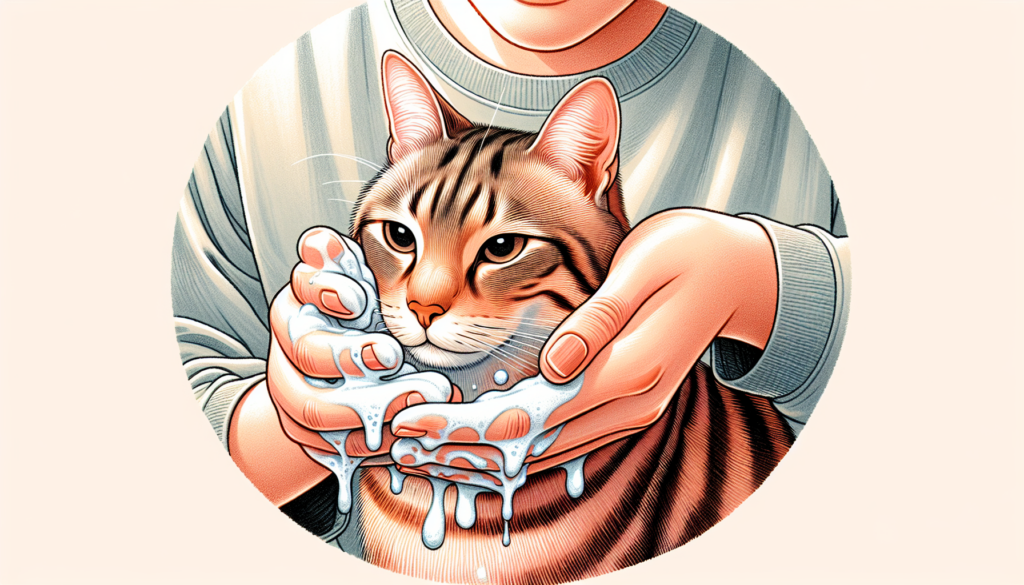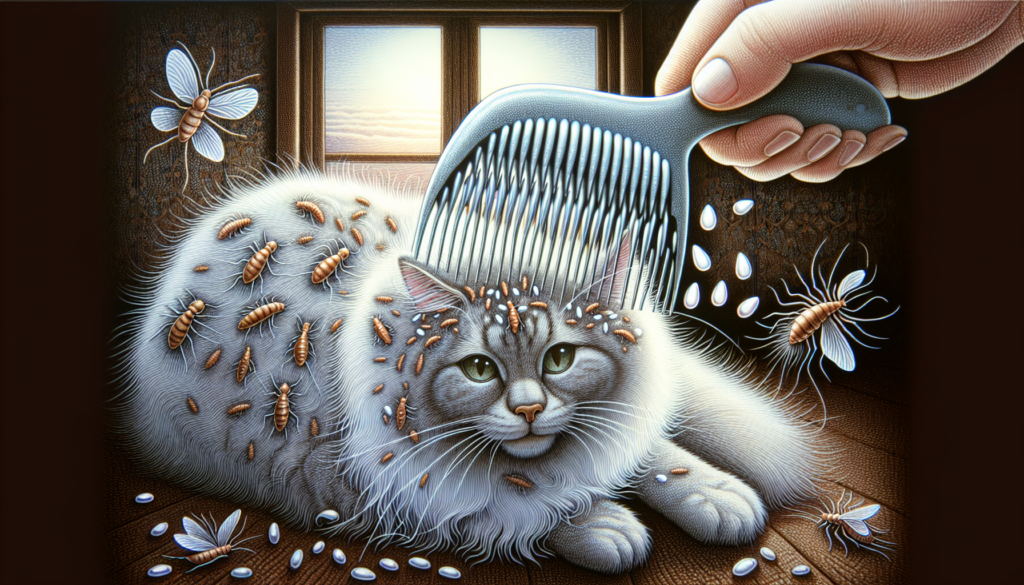Make Your House Free From Fleas In 10 Easy Steps
- Key Takeaways
- Understanding Flea Infestations
- Immediate Steps to Take
- 1. Treating Your Pets
- 2. Wash Bedding and Fabrics
- 3. Vacuum Thoroughly
- 4. Use Flea Spray or Powder
- 5. Treat the Yard
- 6. Wash Pet Toys and Accessories
- 7. Use a Flea Comb
- 8. Treat Your Home with a Flea Bomb or Fogger
- 9. Regular Cleaning and Maintenance
- 10. Monitor and Follow Up
- Natural Remedies to Repel Fleas
- Preventing Future Infestations
- When to Call a Professional
- Summary
- Frequently Asked Questions
Fleas in your house? You need a fast solution. This guide will show you how to get rid of fleas in the house fast with easy and effective steps. From treating pets to cleaning your home, we’ve got you covered.
Key Takeaways
- Understanding the flea life cycle and their habits is crucial for effective flea control and prevention.
- Immediate actions, such as treating pets with appropriate flea treatments and cleaning their bedding, are essential in controlling flea infestations.
- Consistent cleaning, regular use of flea control products, and monitoring of your home and pets can help prevent future flea infestations and ensure a flea-free environment.
Understanding Flea Infestations
Fleas are tiny, wingless insects that feed on the blood of animals, including cats and dogs. These tiny pests can cause irritation and discomfort for their hosts, often resulting in flea bites. Here are some key characteristics of all the fleas:
- They are small, reddish-brown pests that are about an eighth of an inch long.
- They can jump great distances thanks to their powerful back legs.
- Though they may seem insignificant in size, fleas can cause a multitude of problems for both pets and humans.
The flea life cycle encompasses four stages. These stages are:
- Egg
- Larva
- Pupa
- Adult flea
This cycle can make flea infestations particularly challenging to eliminate. A single female flea can lay up to 2,000 eggs in her lifetime, with several hundred eggs produced each week shortly after her first blood meal. These eggs can be found scattered throughout your home, particularly in places where pets spend the most time, such as their bedding and communal rooms.
Fleas thrive in warm climates and are most active during the summer months. This preference for warm environments allows them to reproduce rapidly and spread extensively throughout the house, leading to a nasty infestation that can be difficult to control. Flea infestations stem from the presence of flea larvae, which hatch from eggs and can remain dormant for months if conditions are not ideal, waiting for the right moment to develop into adult fleas.
Gaining insights about the flea life cycle and their habits aids in effective treatments. Fleas can be brought into your home from the outside on pets or even on your clothing. Once inside, they quickly find a host to feed on and start the cycle anew. By knowing their preferences and behaviour, you can implement targeted strategies to get rid of fleas and prevent future infestations.
Immediate Steps to Take
Once a flea infestation is detected, prompt action is required. Fleas are not only discomfort but also carriers of diseases that can affect both pets and humans. Start by treating all pets in the house with flea treatments without delay, even if only one shows signs of infestation.
Allow the treated pets to access all their usual resting areas. This helps ensure that any remaining fleas will come into contact with the flea treatment and be killed. Be particularly diligent in cleaning and vacuuming areas where pets frequently rest, using a vacuum with a disposable bag to avoid contact with flea contents.
These few tips can make a significant difference in controlling the initial outbreak.
1. Treating Your Pets

The first sign that your pet has a flea infestation is often excessive itching and scratching. Fleas can cause serious health problems for pets, including:
- Skin infections
- Hair loss
- Scabs
- Sores
- Upset stomachs
- Weight loss
They can even transmit worm eggs to pets while pets sleep.
There are various flea treatment options available, such as:
- Tablets
- Powders
- Sprays
- Spot-on
- Shampoos
For severe infestations, flea drops can be applied every three weeks during the summer. When using topical treatments, apply them two days after bathing your pet and avoid swimming or bathing for four days post-application to ensure effectiveness.
Consult your veterinarian for a personalised treatment plan and additional guidance on managing flea infestations. They can provide specific recommendations based on your pet’s needs and the severity of the infestation. Consistent treatment of your pets and health monitoring are key to flea elimination.
2. Wash Bedding and Fabrics

Fleas and their eggs can often be found in pet bedding, blankets, and other fabrics your pets frequently come into contact with. To get rid of fleas effectively, wash all these items in hot water and dry them in a high-heat setting. This process helps kill fleas at all stages of their life cycle, ensuring that your pet’s bedding is free from these pesky invaders.
3. Vacuum Thoroughly
An essential step in eradicating fleas from your home is thorough vacuuming. Here’s how to do it:
- Vacuum carpets, rugs, furniture, and any areas where your pets frequent thoroughly.
- This helps remove flea eggs, larvae, and flea dirt.
- Dispose of the vacuum bag or canister outside to prevent any fleas from re-entering your home.
For a deeper clean, consider using a steam cleaner to reach and kill fleas hidden in fibres.
4. Use Flea Spray or Powder

Using a flea spray or powder can dramatically reduce the flea population in your home. These products are designed to kill fleas at various stages of their life cycle, including eggs and larvae. Apply a flea treatment spray or powder to carpets, upholstery, and other infested areas, ensuring thorough coverage.
Focus on areas with visible flea droppings or eggs, as these are signs of high flea activity. Be diligent in following the product instructions for safety and effectiveness. Some flea sprays and powders can also be used directly on pets, but ensure they are safe for animal use.
Reapply flea treatments regularly to prevent reinfestation and keep your home flea-free. For complete flea eradication, it is imperative to treat the whole house, including secluded areas like beneath furniture.
5. Treat the Yard
In case your pets venture outdoors, it’s vital to treat your yard to avoid re-infestation. Fleas can live in grass and soil, making your outdoor space a potential breeding ground for these pests. Use a flea control product designed for outdoor use and apply it to your lawn and other areas where your pets frequent.
Regularly mowing the lawn and keeping outdoor areas clean can also help reduce flea populations.
6. Wash Pet Toys and Accessories
Fleas can hide in pet toys, grooming tools, and accessories, making it essential to clean these items regularly. Use hot, soapy water to wash pet toys and grooming tools, ensuring any hidden fleas are eliminated.
Regularly cleaning these items aids in averting flea infestations.
7. Use a Flea Comb

A flea comb is an effective tool for removing fleas from your pets’ fur. Using a flea comb regularly can help catch fleas, eggs, and flea dirt. This method is particularly useful for short-haired pets and can help catch fleas early before they have a chance to multiply.
Dispose of any fleas or eggs you find immediately to prevent them from re-infesting your home. Regular use of a flea comb can also help monitor the effectiveness of your flea treatments and ensure your pets remain flea-free.
8. Treat Your Home with a Flea Bomb or Fogger
A flea bomb or fogger can be an effective solution for severe flea infestations. These products release insecticides that kill fleas, larvae, eggs, and even flea pupae throughout your home. To ensure your safety, follow all safety precautions and vacate the premises as directed during the treatment.
Flea bombs and foggers are designed to reach areas that are difficult to treat with sprays and powders. However, it’s critical to maintain regular cleaning and surveillance to confirm the complete eradication of fleas and to thwart future infestations.
9. Regular Cleaning and Maintenance
Sticking to a routine cleaning schedule is pivotal in averting future flea infestations. Here are some steps to follow:
- Continue vacuuming carpets, rugs, and furniture regularly.
- Wash pet bedding frequently.
- Keep an eye out for any signs of fleas.
- Act promptly if you notice any signs of fleas.
Regular cleaning helps disrupt the flea life cycle and keep your home flea-free.
10. Monitor and Follow Up
After the initial treatments, it’s important to monitor your pets and home for any signs of fleas. If the problem persists, you may need to repeat treatments or consult your veterinarian.
Routine surveillance aids in affirming the effectiveness of your flea control efforts and in maintaining a flea-free home.
Natural Remedies to Repel Fleas

Natural remedies offer a way to repel fleas without using harsh chemicals. Lemon spray, made by boiling a sliced lemon in water and letting it sit overnight, can be used on affected areas to repel fleas. Vinegar can also be used as a natural flea repellent by creating an acidic environment, although it will not kill fleas at all stages.
Plants like lavender, spearmint, and chrysanthemums can help repel fleas due to their natural oils and compounds. Diatomaceous earth, a natural powder made from fossilised remains of algae, can be sprinkled in areas where fleas are present to cut through their exoskeletons and dehydrate them. Salt and baking soda can also be used to dehydrate fleas in carpets and other areas.
These natural remedies, including insect growth regulators, are safer for homes with pets and children and can be part of an integrated flea control strategy.
Preventing Future Infestations
Preventing future flea infestations requires regular pet care and maintenance. Bathe and brush your pets regularly to remove any fleas and dirt from their fur. Use year-round flea control treatments to keep your pets protected against fleas.
Limiting your pets’ contact with wild and stray animals can also help prevent fleas from entering your home. Regularly clean bedding, vacuum, and wipe down floors and skirting boards to avoid a flea infestation. Steady preventive actions aid in keeping your home free from fleas.
When to Call a Professional
If DIY methods fail to eliminate fleas or if they keep reappearing, it may be time to contact a professional pest control service. Professionals have the expertise and tools to address the underlying issues more effectively and can provide long-lasting treatments that remain effective for up to 12 weeks.
Hiring professionals can ensure the complete eradication of fleas and help avoid safety risks from the incorrect use of DIY flea control products.
Summary
In summary, making your house free from fleas involves understanding their life cycle, taking immediate actions, treating pets and the home, and maintaining regular cleaning and monitoring. By following these 10 steps, you can effectively get rid of fleas and prevent future infestations. Remember, persistence is key, and with the right approach, you can reclaim your home from these pesky invaders.